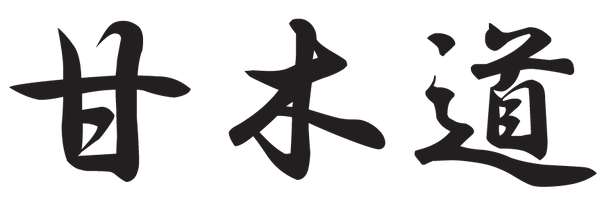How to choose a kaishi
Share
How to choose a kaishi
Find the perfect book for your needs, focusing on Kyukyodo, Haibara, and Tsujitoku.
From matcha sweets holders to memos, simple envelopes, and coasters, kaishi is a Japanese all-purpose paper that can be used for writing, wiping, and wrapping. As its name suggests, it originated as a portable piece of paper carried in the pocket. Even today, it continues to beautifully align everyday actions, as well as tea ceremonies.
This time, we will introduce the characteristics of the long-established Kyukyodo, Haibara , an Edo washi paper maker, and Tsujitoku , a Kyoto paper maker, and provide a selection guide that will be useful for both beginners and experts, from the three perspectives of size, paper quality (anti-bleeding), and design .
1. First, "size" - the basics of tea ceremony and guidelines for everyday use
Kaishi generally come in two basic sizes .

Regular (women's) size : Approximately 145 x 175 mm . Most commercially available phones are this size, making them suitable for everyday use by both men and women.
Large size (for men) : Approximately 175 x 205 mm . This is the size typically used by men at tea ceremonies. It allows for more room to wrap and lay things.
If you're unsure, it's best to keep the "regular size" on hand, and if you use it often for tea ceremonies or wrapping , it's convenient to also use the large size. Tsujitoku uses "notation that does not limit the use" and recommends that for tea ceremonies, men use large and women use regular.

2. Next, "paper quality and anti-bleed" - the balance of placing, wiping, and writing
Kaishi paper comes in different types, with or without anti-bleeding treatment and made from different fibers .

With anti-bleeding properties : Great for wrapping wet sweets or as a gift wrapping paper. Letters are also clear.
No anti-bleed : Highly absorbent, ideal for wiping your mouth or quickly wiping down a table.
The main raw materials for washi paper are kozo, mitsumata, and gampi . Kozo is strong and warm, mitsumata has a dense texture and an elegant luster, and gampi is smooth, making it known as the "king of washi paper" (the composition varies depending on the product).
3. Choose a design: plain, watermarked, embossed, or colored border
The expression on the kaishi influences the impression of the gesture. We will introduce some representative designs and highlights of the three brands featured here.

Plain Rikyu Kaishi
The basics of the tea ceremony. First, a plain white tatami mat. The standard size is 145 x 175 mm.

Watermark and Sukiire
This is an elegant technique for incorporating patterns into paper. Tsujitoku has a wide range of designs in its Sukiire series, including designs related to Kyoto (e.g., large sizes such as "Miyakomichi"). These are subtle designs that will not stand out even at tea ceremonies.

Relief (embossed) and seasonal patterns
"Relief," where a pattern floats on the paper, is a classic of Kyukyodo . Seasonal designs such as "sakura" are also elegant for use as sweets recipients or short notes.

Colored Edges - Edo Style
Haibara's "Colored Edge" Kaishi paper , with its brushed colored edges, has a dignified appearance. It looks great as a tip wrapper, chopstick wrapper, or small gift envelope.
4. Brand Highlights
[Official] Kyukyodo Online Shop
A long-established store specializing in incense and washi paper culture. Its elegant washi texture , inherited from calligraphy and painting supplies, is appealing, as are its embossed and seasonally patterned kaishi. Its appearance makes it easy to handle for both photography and tea ceremonies, as well as everyday use. Officially, they are committed to the quality of all washi paper products, so you can rest assured when purchasing from a direct and authorized dealer.
Nihonbashi Haibara
This washi shop is located in Edo Nihonbashi. They specialize in the elegant colors of their brushed designs , such as their "Iro-buchi" kaishi and Shihoko . Their plump, firm washi paper, such as the popular "Himekogiku" (Princess Small Chrysanthemum), is also a reliable container for sweets.
Kyoto Kaishi Specialty Store "Tsujitoku" Official Website
A specialty store that proposes "living with kaishi." They have a wide variety of kaishi, including sukiire, kata-cut, black kaishi, and ribbon kaishi , clearly organized by purpose, even with or without bleed-proof properties. They are perfect for tea ceremonies, but also for everyday use, such as memos, coasters, and tips .
5. Key points for use

Direction : The folded edge of the container should be facing you . This allows for stable handling when holding snacks, wiping the nozzle, or supporting utensils.
How to store : At the tea ceremony, store it in a kaishi case and fold the dirty side inward.
Everyday use : Fold it in four to make a coaster , fold it in three to make a small envelope , wrap it up to give a tip , etc. There are many practical examples of how to use Tsujitoku.
6. "3-piece set" for first-time users

Plain white (standard size, no anti-bleed) ... A versatile base for wiping, laying, and writing.
Seasonal designs (regular size, relief or openwork) ... Perfect for guests or as a gift.
Large size (with anti-bleeding properties) - For lining mizu-yokan (sweet bean jelly) and fresh sweets. Tsujitoku's large size strainer is elegant and recommended.



